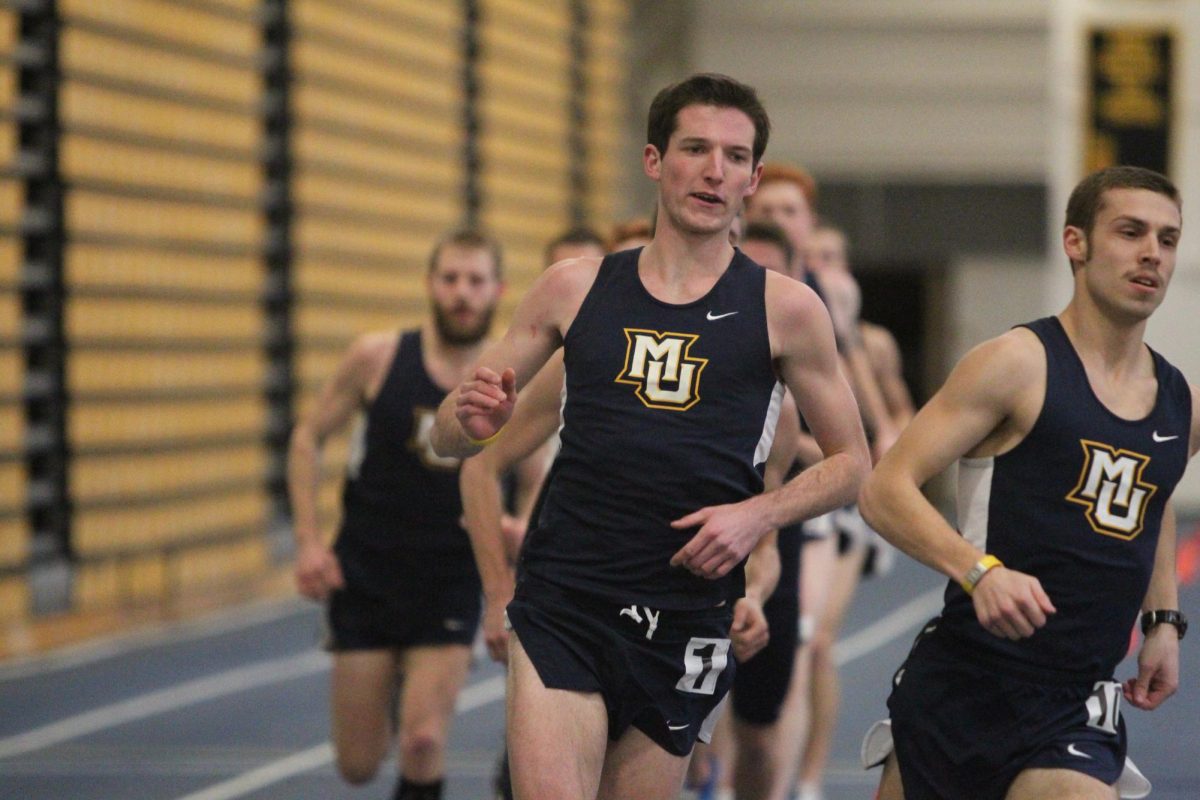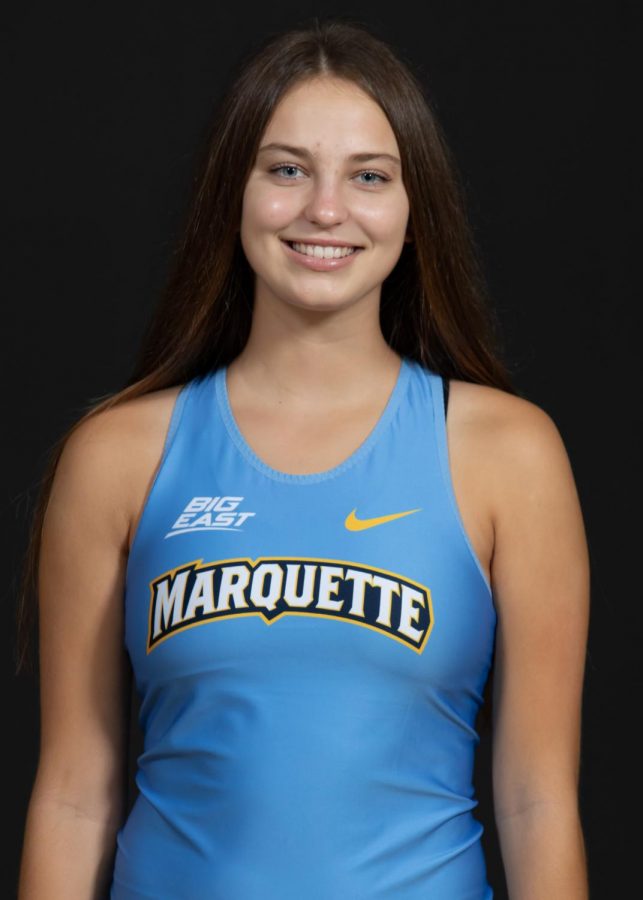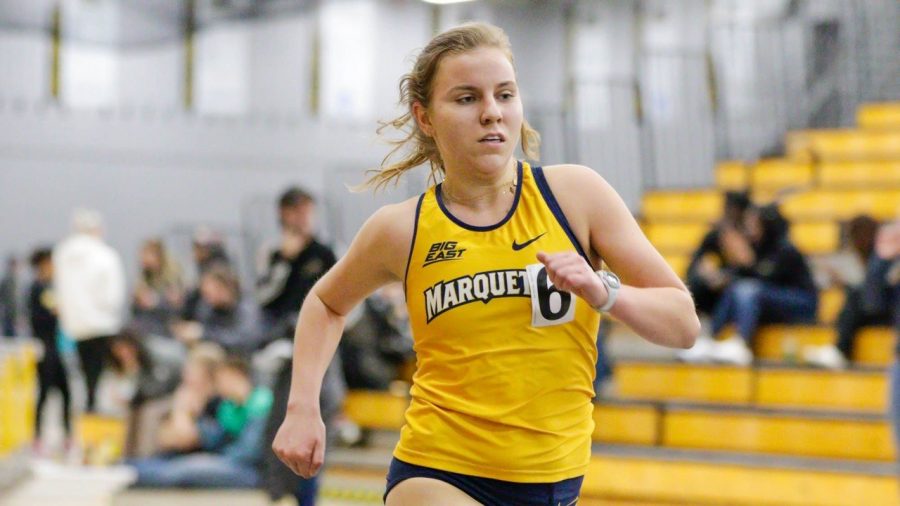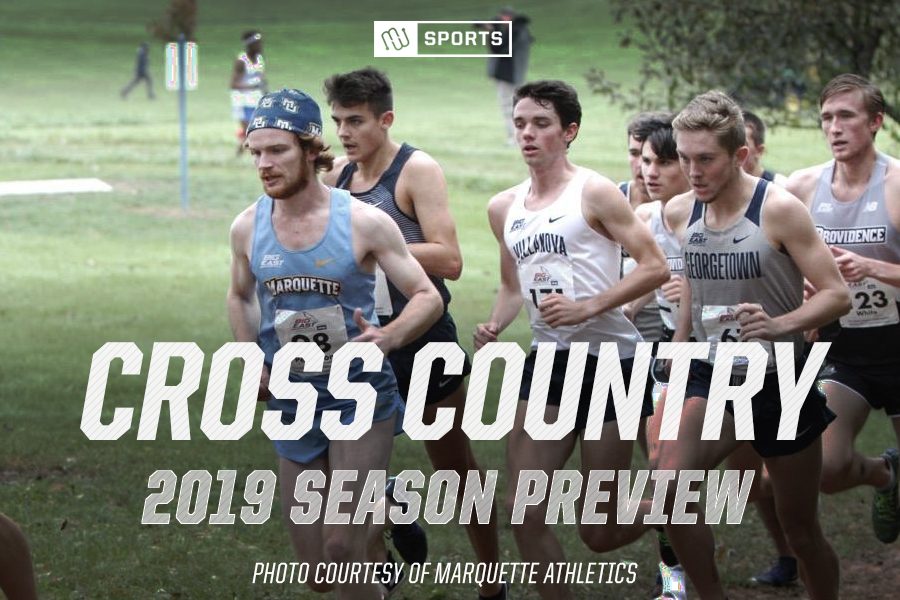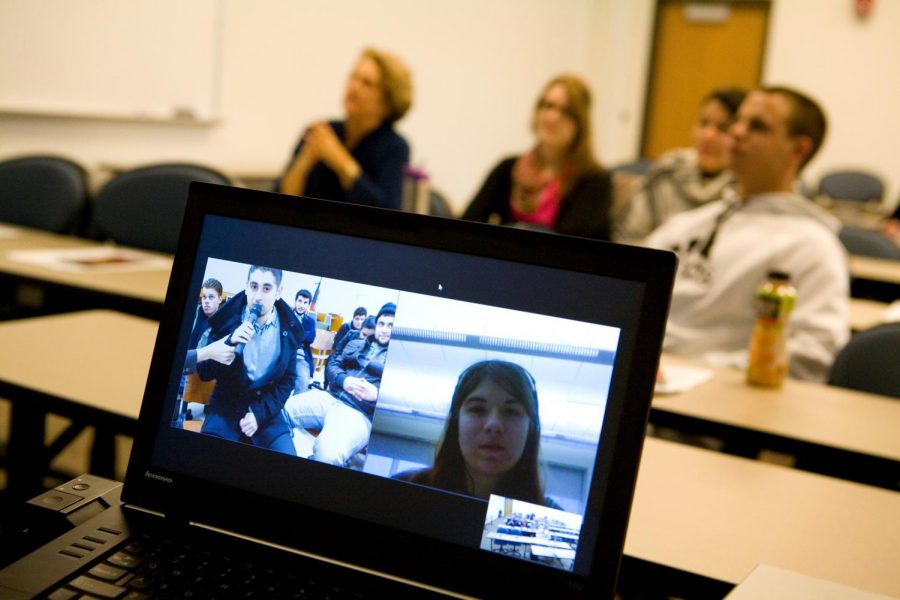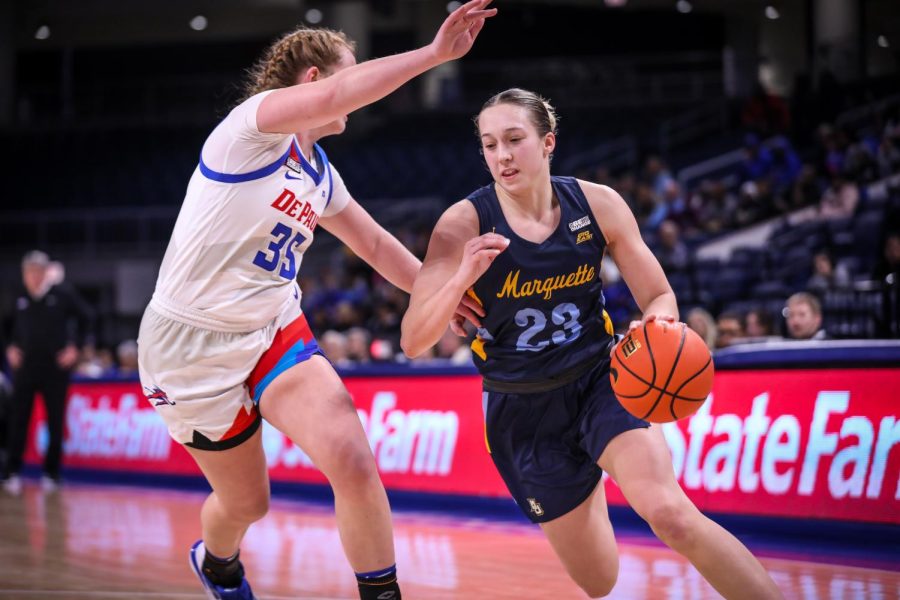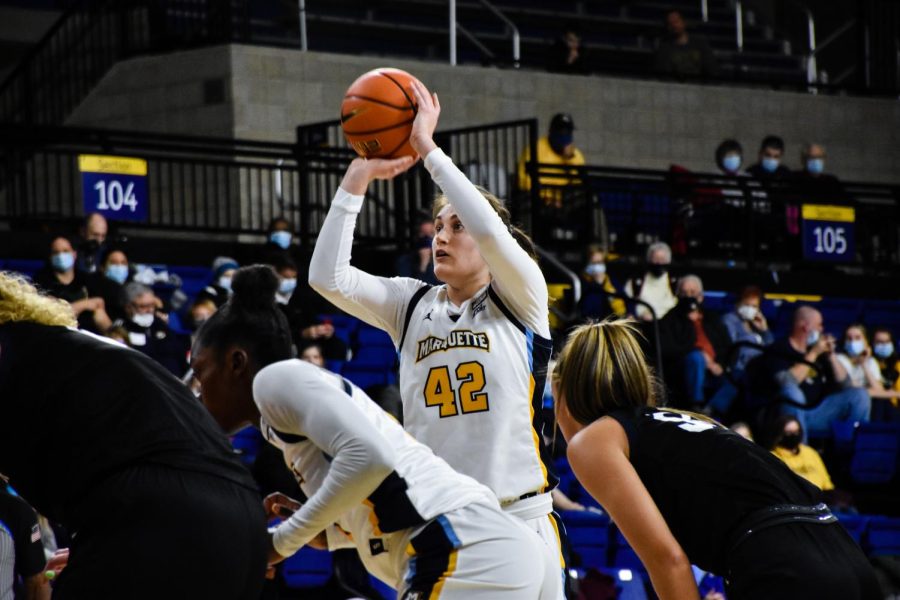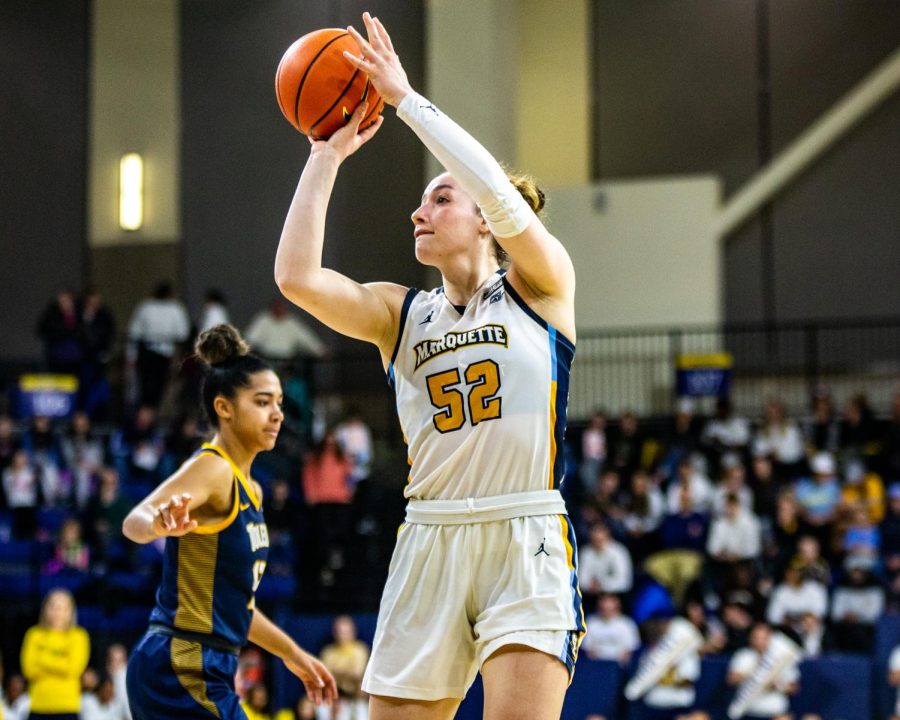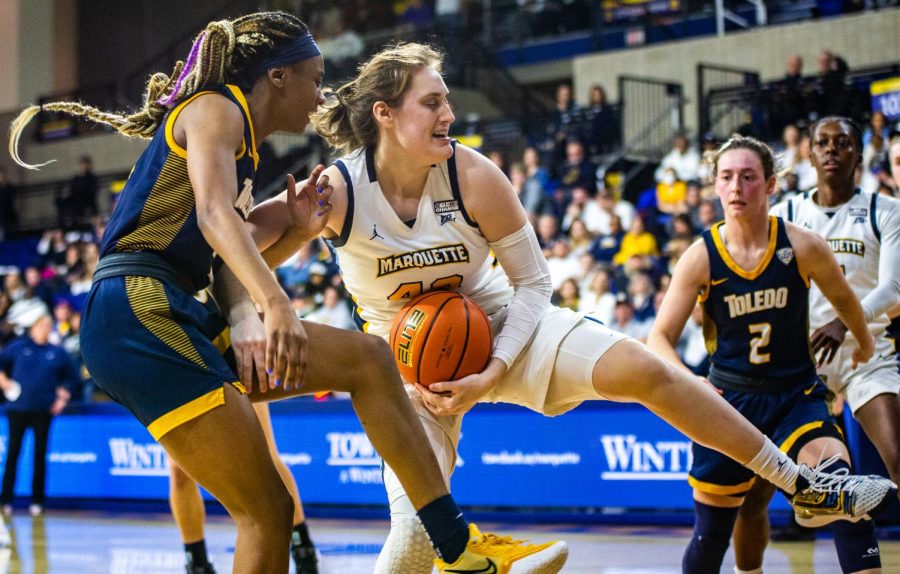Nearly 20 years ago Mike Nelson is running for Truman State University and a bone scan reveals he has a stress fracture in his right femur.
After hearing the news, Nelson is relieved.
The injury comes after over-adjusting from not running at all to 77 miles in one week. Something seems off, but he assumes it’s soreness or tightness, until one day he can’t walk and gets the bone scan.
“The injury that I had was my fault,” Nelson says. “My heart was in the right place, but my head wasn’t. … It was kind of like, ‘Oh it’s not all in my head.’ Something was actually wrong.”
This leads to Nelson redshirting.
Nelson, now head coach of the Marquette cross country team, faces redshirting decisions with his players. He says a redshirting decision is a case-by-case basis and describes two reasons why players redshirt: injury or development as an athlete.
Redshirting is when a college athlete sits out a year without using a year of eligibility.
Women’s basketball redshirt sophomore guard Lauren Van Kleunen and men’s soccer redshirt sophomore Manuel Cukaj both have a fifth year in their collegiate career due to circumstances out of their control. Each were healthy after their redshirt years.
During Van Kleunen’s first year of college basketball in 2016, she finds out she had blood clots in her lungs.
“It was definitely tough because throughout my whole playing career I never had been injured like that,” Van Kleunen says. “Maybe a sprained ankle here or there or a foot injury but (there was) nothing that was one, life-threatening, and two, possibly taking away the chance of me playing basketball.”
Right after Cukaj makes the BIG EAST All-Freshman Team, he has to undergo two surgeries.
“I did a couple of MRIs, and then we found out that my hip joint is not very smooth and the cartilage was gone because of some of the friction in there,” Cukaj says. “So I decided to get hip surgery on both of my hips.”
Nelson says the way players react to their injuries can vary. One player may want to be with the team all the time to encourage them. Another player might want to rehab alone to avoid the reminder that he/she can’t play.
Nelson says he remembers being the latter of those athletes.
Van Kleunen says during her redshirt year, her sickness and schedule makes her feel as if she is on an island at times. She says she knows she’s a part of the team, but it’s in a different capacity. She doesn’t get close with the team until the middle of the year.
She says visits from teammates and coaches in the hospital boost her morale.
Cukaj builds relationships with teammates while being at practice and traveling with the team to away games during his year off the field.
“I felt really close to the team even though I wasn’t able to play or participate in practice,” Cujak says.
Cujak says benefits include improved mental strength and patience. It also allows him to appreciate his athletic ability when healthy.
While spending time on the sidelines with women’s head basketball coach Carolyn Kieger, Van Kluenen remembers realizing she wants to become a coach after her playing career. She can get her master’s degree, which previously is not an option.
“I still to this day believe it is a blessing in disguise,” Van Kluenen says. “I 100 percent believe that. It took me a couple of weeks after for me to realize that.”
Now, Nelson is helping his athletes on cross country navigate through hiccups like his own at Truman State.
“Experiencing injury at a pretty serious level numerous times, hopefully I’m able to provide (my players) with some sound advice of ways to avoid serious injury or ways to deal with it both physically and mentally so that they are able to get everything out of their career that they want to,” Nelson says.



